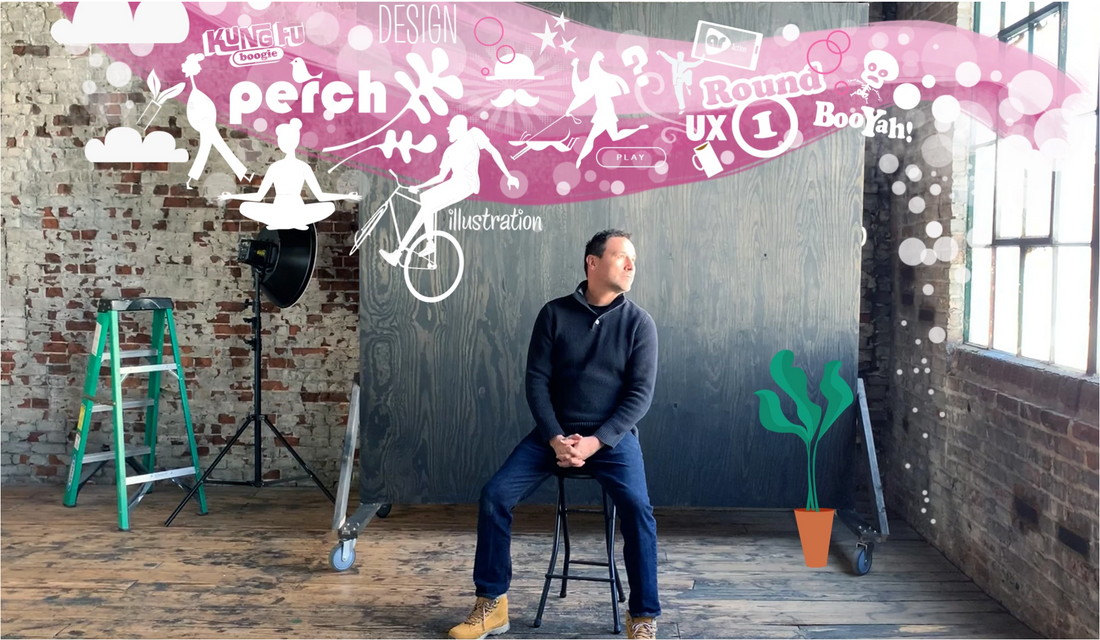
Inside the Mind of Michael Bruza: Creating the Curious Kingdom Characters
As I’ve said before, Playper co-founder Michael Bruza is one of the most creative and imaginative people I’ve ever known. He is a creative director, illustrator, writer, and storyteller having worked for Disney, Netflix, Playkids, PBS Kids, Samsung, and Roku. He’s won an Emmy, a Telly, a Parent’s Choice Award, and even a Billboard Music Award (he’s also a talented songwriter, primarily writing for kids).
I recently took the time to sit down and talk with Michael about the process of creating the Curious Kingdom world.
Webb Knudsen: Can you please discuss the process of how King Ketchup, Queen Alpha, Snuffles, and the rest of the Curious Kingdom characters came about?

Michael Bruza: I started with the castle. For me, the immediate setting is easy for all to grasp and it’s fun and inclusive. It’s a win-win setting because it’s something that any grandparent understands, and they are one of the biggest advocates of toys for young kids. And in that setting, the imaginative possibilities are endless. I try to put myself in the mindset of a 3–6-year-old and from there, the characters and storylines just organically come to me. It’s hard to describe the process step-by-step, but it’s just a matter of one thing leading to another and before you know it, we have a world of really fun and unique characters.
WK: How did it physically come to be?
MB: Years ago, before Playper, I had an idea for something called Cardboard Kingdom. I built a “kingdom” out of FedEx boxes with toilet paper rolls and paper towel tubes as the towers. So, when us three [including COO Susy Christiansen] came to the environmentally friendly idea of Playper, Curious Kingdom was the place to start.
For the specific characters, I relied on my experience working for Disney where I learned entertainment value, and my PBS Kids work experience where I learned the importance of toys with education value. This really felt like a beautiful hybrid of both those experiences. I did scores of pencil sketches until the look and personalities of the characters started to take shape.
I have kids, I’m still a kid, and kids like condiments – specifically, most kids love ketchup! So, King Ketchup is an alliterative name, which in addition to being fun, really resonates with kids and is catchy and memorable - like Curious Kingdom. Things like how the King likes to put ketchup even on pancakes really connects with kids – even in an “eww gross” kind of way.
WK: And the other characters?
MB: Queen Alpha’s name has two meanings. First, she’s really into the alphabet which is to encourage all kids in this age group to be as well. But also “alpha” as in she’s the alpha of the family – the one really in charge. As far as the Knight goes, he was originally going to have narcolepsy. He was to be the Knight of Nighty Night. But then I thought of the Dr. Seuss story ‘Green Eggs & Ham’ and how often kids say no to things without first trying them – “I’ll never eat this or will never do that!”. So, we named him Knight of Never That which is something I think both parents and kids can relate to!
Snuffles the Dragon has a back story we’ll develop later that involves how she was separated from her family and reunited later. In the meantime, she finds herself in the castle with the King’s family, but she’s not an easy “pet” to have. Snuffles is actually based on a golden retriever my family had who had a lot of allergies, so with that being the model, this dragon sneezes fire a lot, inadvertently torching things in the castle.
WB: So, you have ideas beyond just this initial first phase?
MB: Tons! When George Lucas first started thinking about Star Wars, he had all these future stories and scenarios in his back pocket even though he was convinced he’d never get to make more than the first movie. Similarly, I have a lot in my back pocket that I have high hopes we get a chance to develop! The King has a sister who looks very much like him, and they don’t get along. There’s a whole sibling rivalry going on which again is another thing young children relate to. She lives in a separate Kingdom, and we have stickers of her, but eventually it’ll be produced, and kids will have a whole new world with new stories to make up in conjunction with our first product.
WB: Michael, you have such a deep, rich background in children’s entertainment and edutainment – why Playper?
MB: We three are all parents, and we’re all concerned with the environment, so we were all drawn to the idea of letting kids know that you that fun toys don’t have to be made of plastic. For me, Playper harkens back to the Colorforms of the 1970s with the element of those re-stickable Spiderman characters. Those “low-fi” products really sparked the imagination and rivaled the big toys. But we also added in the interactive digital aspect, which is really appealing to me.

It’s all about creating the opportunity for imaginative play. I want to be part of something that is like what LEGO has accomplished but without all the plastic! Ten years from now, I want Playper to have multiple product lines with plenty of characters and stories – castles, pirate ships, aliens, etc. We want Playper to be something where kids can infinitely create their own stories from the worlds we’ve started for them. We want these characters and their stories to be a jumping off point for their imaginations to run wild. There’s nothing more fun or more powerful then unlocking a child’s imagination.
